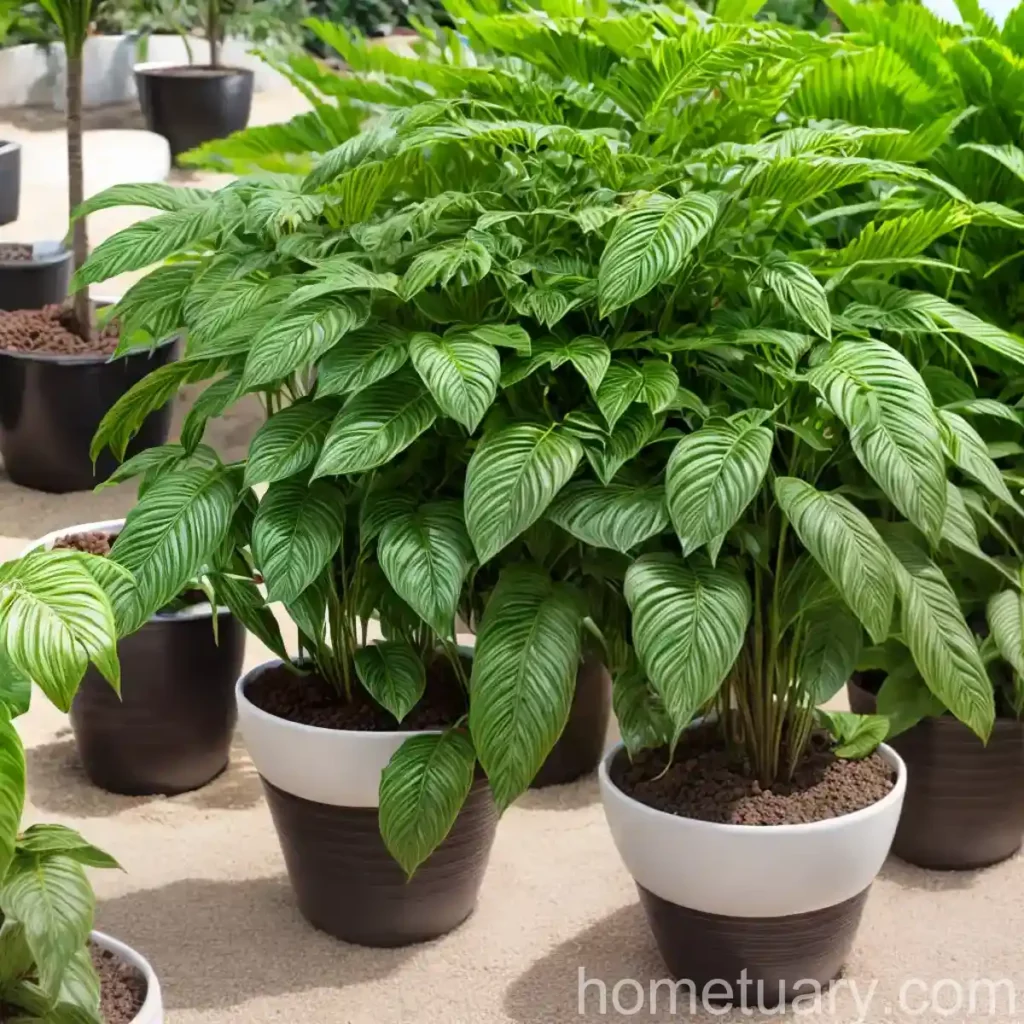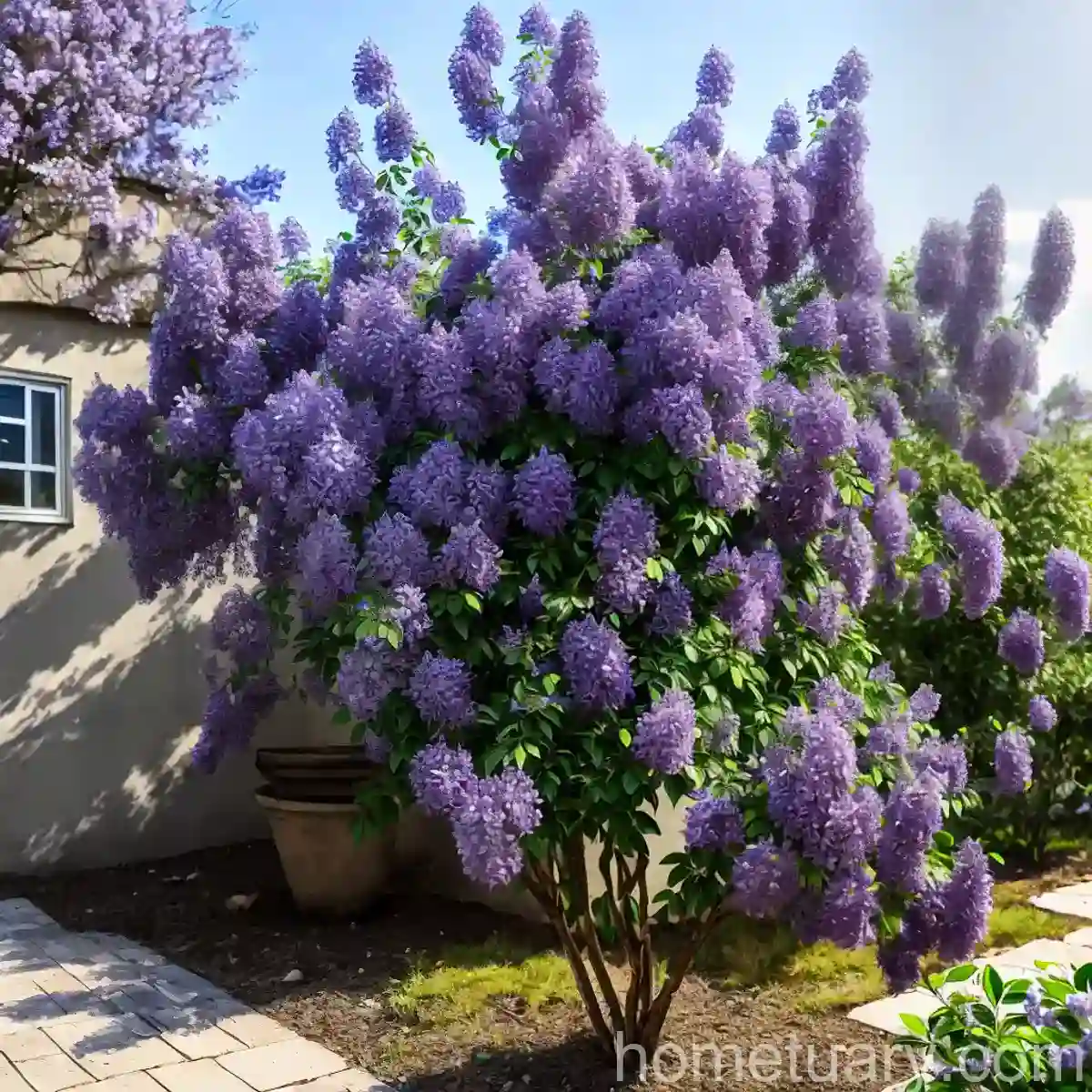Plant Scientist’s Guide to Kalimeris (Kalimeris yomena)
In this comprehensive guide, we will explore everything you need to know about Kalimeris yomena, commonly known as kalimeris, from its basic characteristics to its cultivation requirements, landscape uses, and potential benefits. Whether you’re a beginner gardener or a seasoned horticulturist, this plant scientist’s guide to Kalimeris will provide you with valuable insights and practical tips for successfully growing and caring for this beautiful perennial plant.
What is Kalimeris (Kalimeris yomena)?
Kalimeris yomena is a species of flowering plant in the Asteraceae family, native to East Asia, including Japan, Korea, and China. It is commonly known as Japanese aster or kalimeris and is valued for its profusion of daisy-like flowers and its ability to thrive in various garden settings. The plant is characterized by its upright growth habit, toothed leaves, and showy blooms, making it a desirable addition to perennial borders, cottage gardens, and mixed plantings.
Plant Description and Characteristics
- Plant Family: Asteraceae
- Origin: East Asia
- Plant Habit: Upright, clump-forming
- Foliage: Toothed, lanceolate leaves
- Flowers: Daisy-like, white or light purple
- Growth Habit: Vigorous, spreading
Key Takeaways – Kalimeris (Kalimeris yomena)
Before delving into the specific care and cultivation practices for Kalimeris yomena, let’s highlight some key takeaways about this plant:
- Kalimeris yomena is a perennial flowering plant in the Asteraceae family, native to East Asia.
- It is characterized by its profusion of daisy-like flowers and toothed leaves, making it an attractive ornamental plant.
- The plant exhibits an upright growth habit and is well-suited for perennial borders, cottage gardens, and mixed plantings.
Now, let’s explore the essential aspects of caring for Kalimeris yomena, including its cultural requirements, uses, and propagation techniques.
Culture
When it comes to successfully growing and cultivating Kalimeris yomena, understanding its cultural preferences is essential. This section will cover the plant’s requirements for water, sunlight, fertilizer, soil, and proper pruning techniques.
Water
Proper watering is essential for promoting healthy growth and blooming in Kalimeris yomena. This plant prefers consistent moisture but is also tolerant of short periods of drought once established.
- Watering Frequency: Regular, especially during dry periods
- Soil Moisture: Well-draining soil to prevent waterlogging
- Watering Method: Direct watering at the base of the plant to avoid wetting the foliage
- Drought Tolerance: Moderate, once established
Sunlight
Kalimeris yomena thrives in a specific light environment, making it crucial to provide the appropriate level of sunlight for optimal growth and flowering.
- Sun Exposure: Full sun to partial shade
- Preferred Light: 6-8 hours of sunlight per day
- Shade Tolerance: Moderate, but full sun promotes abundant flowering
Fertilizer
Applying a balanced fertilizer can enhance the overall health and flowering performance of Kalimeris yomena. However, excessive fertilization should be avoided to prevent potential issues.
- Fertilizer Type: Slow-release, balanced fertilizer (e.g., 10-10-10 NPK ratio)
- Application Frequency: Once in early spring and again in midsummer
- Avoidance of Excessive Fertilization: Prevents excessive foliage growth at the expense of flowering
Soil
The soil quality and composition significantly impact the growth, vigor, and overall health of Kalimeris yomena. It is important to provide well-draining soil with proper nutrient levels.
- Soil Type: Well-draining loamy soil
- Soil pH: Slightly acidic to neutral (pH 6.0-7.0)
- Soil Amendments: Organic matter (compost) for improved soil structure and fertility
- Avoidance of Waterlogged Conditions: Prevents root rot and other moisture-related issues
Pruning
Kalimeris yomena can benefit from proper pruning practices to maintain its shape, encourage repeat flowering, and prevent overcrowding.
- Pruning Timing: After the first flush of flowering and periodically throughout the growing season
- Pruning Techniques: Deadheading spent flowers, cutting back leggy growth, and thinning out crowded stems
- Late Season Interest: Some gardeners choose to leave spent flowers for late-season interest and potential wildlife benefits
Uses
Kalimeris yomena offers various uses in the landscape and garden setting, making it a versatile and valuable addition to diverse planting schemes.
Landscape Uses
- Perennial Borders: An excellent choice for adding mid- to late-summer interest in perennial borders
- Cottage Gardens: Complements the informal and romantic aesthetic of cottage-style gardens
- Mixed Plantings: Combines well with other herbaceous perennials and ornamental grasses
- Wildlife Gardens: Attracts pollinators, such as butterflies and bees, with its abundant flowers
Container Planting
- Container Size: Select large containers to accommodate the plant’s spreading growth habit
- Soil Requirements: Use well-draining potting mix with added organic matter
- Watering Needs: Regular watering is essential for container-grown Kalimeris yomena
- Overwintering: In colder climates, consider overwintering containers in a sheltered location
Popularity
Kalimeris yomena has gained popularity among gardeners and horticulture enthusiasts for several reasons, including its attractive flowers, low maintenance requirements, and adaptability to various growing conditions.
- Ornamental Value: Showy flowers and attractive foliage contribute to its ornamental appeal
- Low Maintenance: Requires minimal care once established
- Adaptability: Tolerates a range of soil types and environmental conditions
- Wildlife Benefits: Attracts pollinators and potentially other beneficial wildlife
Propagation
Understanding the various methods for propagating Kalimeris yomena is essential for expanding its presence in the garden or sharing it with other gardening enthusiasts.
Division
- Timing: Best performed in early spring or early fall
- Procedure: Carefully lift the plant, divide the clump into smaller sections, and replant promptly
- Ensuring Vigor: Discard any weak or diseased portions, and select healthy divisions for replanting
Seeds
- Collection: Harvest seeds from mature flowerheads after blooming
- Sowing: Start seeds indoors in early spring or directly sow in the garden in late spring
- Germination: Provide bottom heat and consistent moisture for germination
Cuttings
- Propagation Technique: Semi-ripe cuttings from healthy, actively growing shoots
- Rooting Medium: Well-draining, sterile rooting medium
- Humidity and Heat: Maintain high humidity and provide bottom heat for successful root development
Common Diseases and Pests
Like many plants, Kalimeris yomena is susceptible to certain diseases and pests that can affect its overall health and vigor. Understanding these potential issues is crucial for timely intervention and effective management.
Disease Diagnosis
- Powdery Mildew: Characterized by a powdery white coating on leaves and stems
- Leaf Spot: Circular, dark spots on leaves, often caused by fungal pathogens
- Root Rot: Soil-borne fungal pathogens causing wilting and decline of the plant
Common Pests
- Aphids: Small, soft-bodied insects that feed on plant sap, leading to distorted growth and foliage damage
- Spider Mites: Tiny spider-like pests that cause stippling and webbing on the underside of leaves
- Slugs and Snails: Feed on foliage, leading to ragged edges and holes in leaves
Pest and Disease Management
- Cultural Practices: Proper spacing, adequate air circulation, and sanitation to minimize disease spread
- Natural Predators: Encourage beneficial insects and natural predators, such as ladybugs and lacewings
- Organic Controls: Neem oil, insecticidal soap, and horticultural oils for managing common pests
- Fungicidal Treatments: Use fungicides as a preventive measure or in response to confirmed disease outbreaks
Botanist’s Tips
To enhance your knowledge and appreciation of Kalimeris yomena and its cultivation, consider the following tips from plant scientists and horticultural experts:
- Garden Design: Incorporate Kalimeris yomena into mixed plantings for contrasting textures and colors
- Companion Plants: Pair with late-flowering perennials, ornamental grasses, and summer-blooming bulbs
- Overwintering: Apply a protective layer of mulch in late fall for overwintering in colder climates
- Wildlife Habitat: Recognize the plant’s role in supporting pollinators and potentially other beneficial garden wildlife
Fun Facts
Uncover some intriguing and lesser-known facts about Kalimeris yomena that add to its charm and appeal in the garden:
- Medicinal Uses: In traditional medicine, certain parts of the plant were used for medicinal purposes
- Symbolism: Historically associated with specific cultural or symbolic meanings in its native regions
- Folklore: Stories, beliefs, or cultural significance surrounding the plant’s history and folklore
Links to External Resources
For additional information, resources, and plant-related content, we recommend exploring the following external resources:
Conclusion
In conclusion, Kalimeris yomena is a captivating perennial plant with much to offer in terms of its ornamental value, adaptability, and potential benefits for wildlife and garden ecosystems. By integrating the insights and recommendations provided in this plant scientist’s guide, you can confidently cultivate, care for, and appreciate the unique qualities of Kalimeris yomena in your garden or landscape. We hope this comprehensive guide has equipped you with the knowledge and inspiration to embark on a rewarding journey with this delightful and versatile plant species.
Remember, successful gardening is a blend of science, art, and passion, and Kalimeris yomena exemplifies the beauty and rewards of horticultural pursuits.
Happy gardening!
Disclaimer: The information provided in this guide is intended for educational and informational purposes only, and does not replace professional horticultural or botanical advice. Always consult with local gardening experts and extension services for specific recommendations and guidance tailored to your unique growing conditions and location.
Keywords: Kalimeris yomena care, Kalimeris yomena plant, Growing Kalimeris yomena, Kalimeris yomena varieties, Kalimeris yomena flower, Kalimeris yomena perennial, Kalimeris yomena seeds, Kalimeris yomena propagation, Kalimeris yomena pruning, Kalimeris yomena disease, Kalimeris yomena pests, Kalimeris yomena cultivation, Kalimeris yomena landscape, Kalimeris yomena garden, Kalimeris yomena planting, Kalimeris yomena watering, Kalimeris yomena soil, Kalimeris yomena sun requirements, Kalimeris yomena shade tolerance, Kalimeris yomena growth habits, Kalimeris yomena companion plants, Kalimeris yomena container gardening, Kalimeris yomena blooming season, Kalimeris yomena pollinators, Kalimeris yomena medicinal uses, Kalimeris yomena benefits, Kalimeris yomena folklore, Kalimeris yomena symbolism, Kalimeris yomena landscaping ideas, Kalimeris yomena border plant, Kalimeris yomena ground cover, Kalimeris yomena wildlife plants, Kalimeris yomena natural habitat, Kalimeris yomena plant family, Kalimeris yomena plant description, Kalimeris yomena plant characteristics, Kalimeris yomena plant origin, Kalimeris yomena zone requirements, Kalimeris yomena drought tolerance, Kalimeris yomena deer-resistant, Kalimeris yomena cold hardiness, Kalimeris yomena cutting back, Kalimeris yomena late season interest, Kalimeris yomena ornamental value, Kalimeris yomena low maintenance, Kalimeris yomena landscape design, Kalimeris yomena unique features, Kalimeris yomena showy flowers, Kalimeris yomena attractive foliage, Kalimeris yomena container plant maintenance















